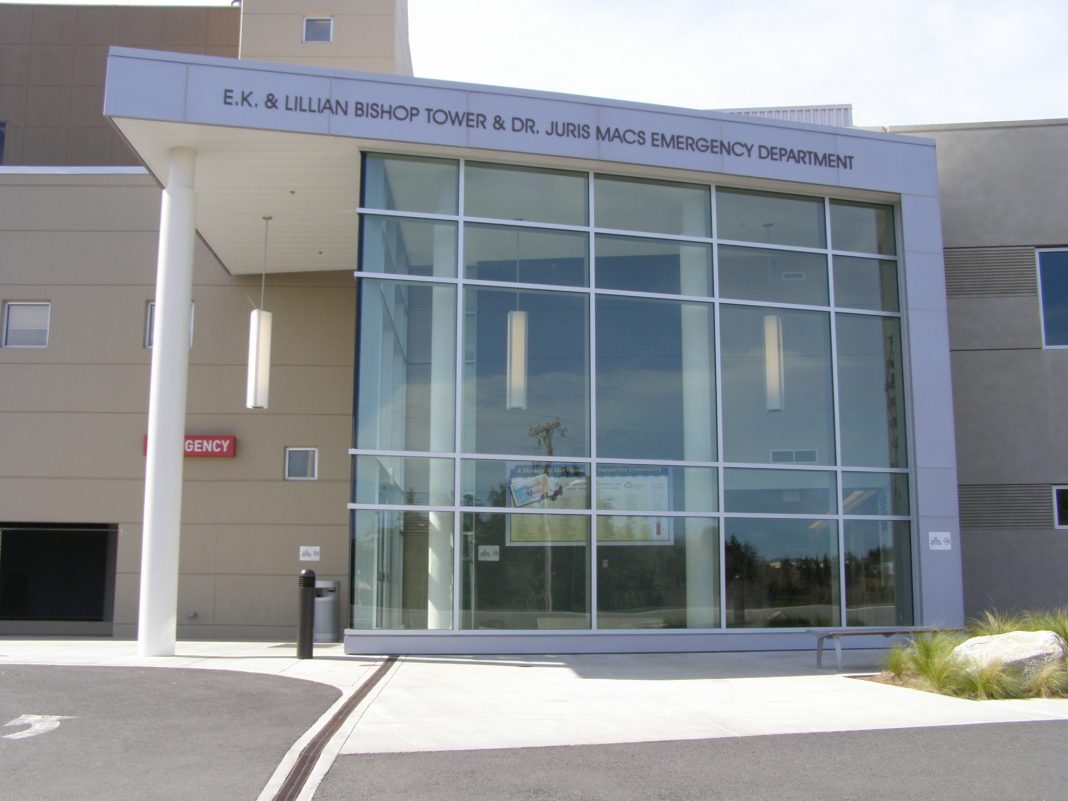When an athlete – let’s say a soccer player – breaks a leg, typically the attending physician will ask them baseline questions. What’s your pain level? How did this happen? Have you injured this leg in the past? All are relevant, but for the patient watching a potential end to their athletic career, anxiety may be foremost. “They will often be scared and in excruciating pain, and all they can think is ‘I can’t play soccer,’” says Kelly Corcoran, Culture Change Leader at Grays Harbor Community Hospital.

Getting hospital staff to address those underlying concerns is part of Corcoran’s role. “It’s not just about the diagnosis,” she says. “Whether we’re dealing with cancer, diabetes or broken bones, a patient’s diagnosis does not define them. Taking the time to listen is huge. When nurses are rounding on patients regularly, being respectful, courteous and asking extra questions, they may hear a lot of things that are surprising.”
As Culture Change Leader, Corcoran has oversight for systems and processes that affect patient and staff experience. On the patient front, she oversees surveys that provide feedback on the perception of care, including the Hospital Consumer Assessment of Healthcare Providers and Systems (HCAHPS) and Outpatient Ambulatory Services Consumer Assessment of Healthcare Providers and Systems (OASCAHPS).
“Depending on what patients say, we build our strategy around how we’re providing care,” says Corcoran. She works with personnel in charge of measurement from different departments to implement change. “I coordinate with the Chief Nursing Officer and we look at what’s been improving and what needs to improve.” Currently we are piloting on the Medical floor a program wherein a Patient Ambassador asks the HCAHPS questions during a patient’s stay. The feedback is fantastic and informs staff of how great their care is, and pinpoints opportunities.
Employees also get an engagement survey every year and a half. The most recent was in March, and Corcoran was pleased to note the highest rate of participation yet, with 72 percent of the staff responding. Based on the results, she works with managers to strategize how to talk about issues that employees have identified.
“If they’ve told us that communication could be different or better, we look at things like communication boards where department staff can give kudos and acknowledgments. That’s the recognition piece,” says Corcoran. “There can also be a board for bringing forth ideas for improvement on a consistent basis. I work with the department to evaluate whether the issue is something they can take ownership of, or whether it’s a systemic problem that needs to go to a performance review team.”
Among the hospital’s leadership team, a monthly lunch and learn is an opportunity for different managers to present on a variety of subjects. “It’s an hour long and we have many different topics,” she explains.
Managers are also required to present at regular management council meetings, a practice that helps them develop professional presentation skills and creates a greater understanding for one another. “If we can support employees and provide programs and processes where they all feel heard, understood and supported, they’ll have greater satisfaction at work,” she says. “They’ll trust each other and enjoy each other’s company, which reduces risk and creates a cleaner, healthier environment. They’ll have better response time and make less mistakes. It all rolls out into patient care.”
That means working across departments to make sure patients’ needs are met. “A patient may tell someone from Environmental Services something that they wouldn’t feel comfortable telling a nurse or doctor because they don’t want to bother them,” says Corcoran. “It could be something as simple as needing an extra pillow. Then the housekeeper gets to assist in patient care.”
Part of her goal is to connect with individual staff members about what motivates them to practice health care. she says,
“That’s what we’re trying to do at GHCH. We want to grow that original motivation into a culture of dignity and respect that’s patient-centered. Looking at the different surveys and how they’ve been rolled out and either supported or not supported, it’s about getting to why they are important for the staff and what they’re trying to achieve.”
Within the larger community, Corcoran has reached out to local clergy, providing them with an appreciation luncheon and attending local ministerial meetings. “I want them to feel comfortable and supported in visiting patients,” she says. “If we’re saying we’re about body, mind, and spirit, we’d better follow through.” She’s also created a database so that during the summer months when Grays Harbor County is inundated with visitors from around the globe, staff can easily locate local clergy for patients of a variety of faiths.
Corcoran was herself a hospital chaplain for 20 years and a teacher for 14, with a background in ethics and crisis management. Her previous experiences have prepared her well for the role of Culture Change Leader, she believes. “I get to engage everybody. It’s not just me sitting in my room with a computer. I’m trying to create an organic process that’s as unique for each person as the shoes they own. That’s a lot of fun.”
For more information visit the Grays Harbor Community Hospital website or call 360-532-8330.
Sponsored














































